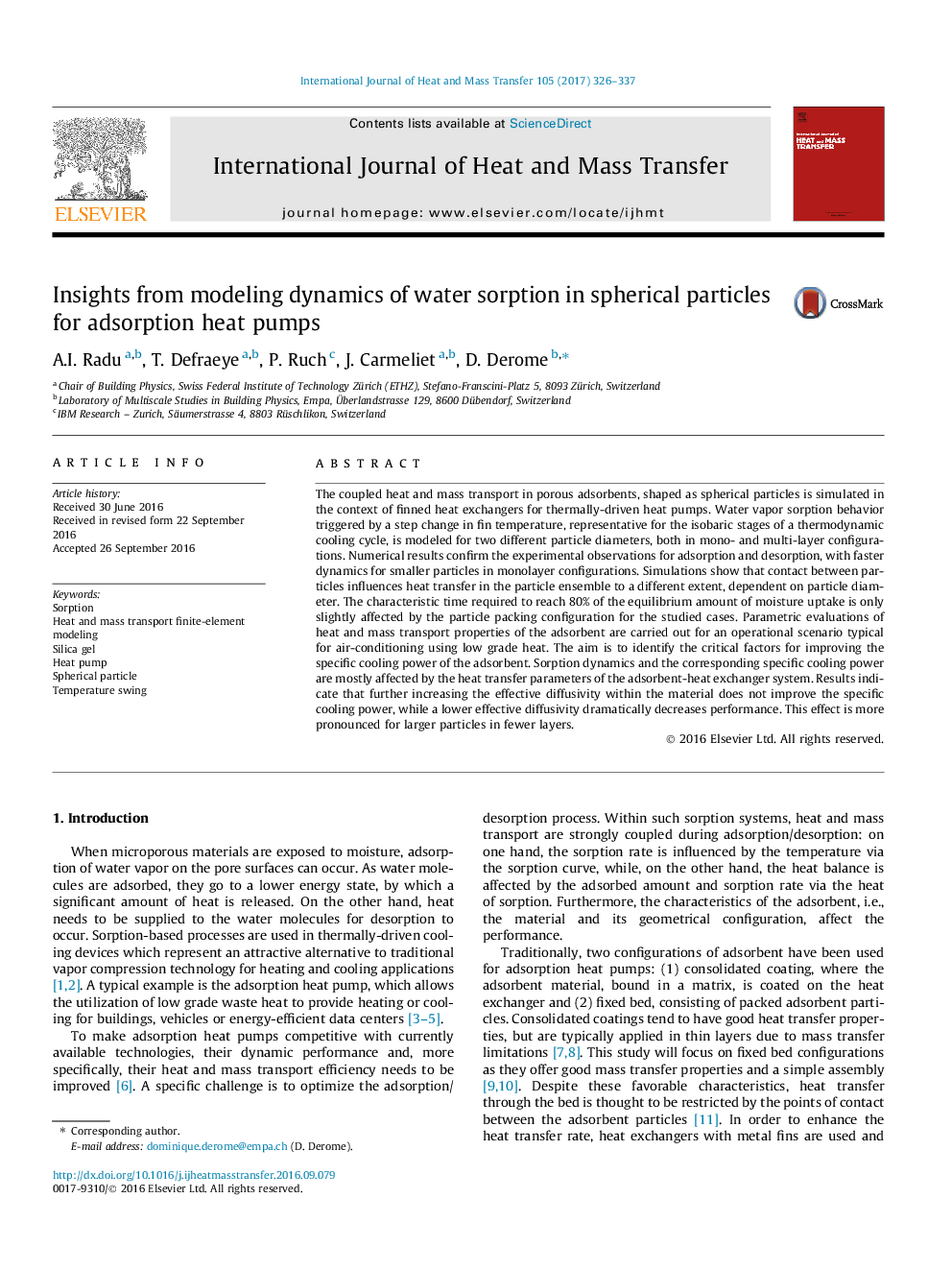| کد مقاله | کد نشریه | سال انتشار | مقاله انگلیسی | نسخه تمام متن |
|---|---|---|---|---|
| 4994696 | 1458037 | 2017 | 12 صفحه PDF | دانلود رایگان |
عنوان انگلیسی مقاله ISI
Insights from modeling dynamics of water sorption in spherical particles for adsorption heat pumps
ترجمه فارسی عنوان
بینش از پویایی مدل سازی جذب آب در ذرات کروی برای پمپ های جذب
دانلود مقاله + سفارش ترجمه
دانلود مقاله ISI انگلیسی
رایگان برای ایرانیان
کلمات کلیدی
جذب، حمل و نقل گرما و جرم مدل سازی عناصر محدود، ژل سیلیکا، پمپ حرارتی، ذرات کروی، نوسان دما،
موضوعات مرتبط
مهندسی و علوم پایه
مهندسی شیمی
جریان سیال و فرایندهای انتقال
چکیده انگلیسی
The coupled heat and mass transport in porous adsorbents, shaped as spherical particles is simulated in the context of finned heat exchangers for thermally-driven heat pumps. Water vapor sorption behavior triggered by a step change in fin temperature, representative for the isobaric stages of a thermodynamic cooling cycle, is modeled for two different particle diameters, both in mono- and multi-layer configurations. Numerical results confirm the experimental observations for adsorption and desorption, with faster dynamics for smaller particles in monolayer configurations. Simulations show that contact between particles influences heat transfer in the particle ensemble to a different extent, dependent on particle diameter. The characteristic time required to reach 80% of the equilibrium amount of moisture uptake is only slightly affected by the particle packing configuration for the studied cases. Parametric evaluations of heat and mass transport properties of the adsorbent are carried out for an operational scenario typical for air-conditioning using low grade heat. The aim is to identify the critical factors for improving the specific cooling power of the adsorbent. Sorption dynamics and the corresponding specific cooling power are mostly affected by the heat transfer parameters of the adsorbent-heat exchanger system. Results indicate that further increasing the effective diffusivity within the material does not improve the specific cooling power, while a lower effective diffusivity dramatically decreases performance. This effect is more pronounced for larger particles in fewer layers.
ناشر
Database: Elsevier - ScienceDirect (ساینس دایرکت)
Journal: International Journal of Heat and Mass Transfer - Volume 105, February 2017, Pages 326-337
Journal: International Journal of Heat and Mass Transfer - Volume 105, February 2017, Pages 326-337
نویسندگان
A.I. Radu, T. Defraeye, P. Ruch, J. Carmeliet, D. Derome,
